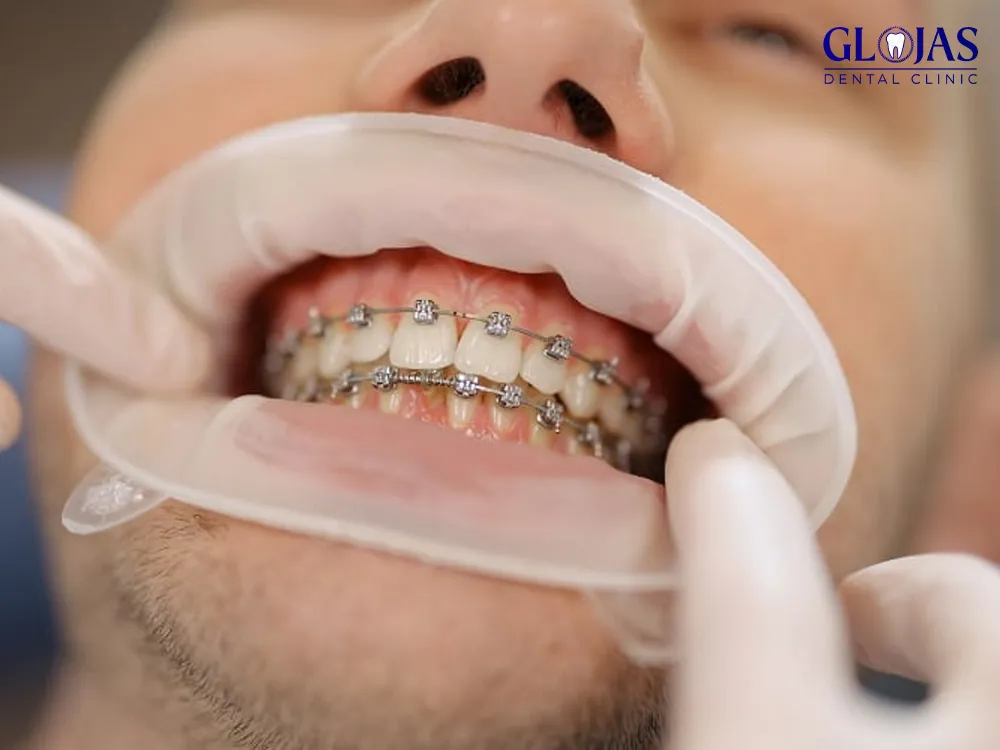Getting braces is a significant step toward achieving a straighter, healthier smile. While the process requires some adjustment, following the right dos and don’ts can make your orthodontic journey smooth and successful. Whether you’re a teen, an adult, or a parent managing your child’s braces, this guide will provide essential tips, practical advice, and answers to common questions about living with braces.
The Dos of Wearing Braces
1. Maintain Excellent Oral Hygiene Braces create small spaces where food particles can get trapped, leading to plaque buildup and cavities. To prevent this:
- Brush after every meal using a soft-bristled toothbrush and fluoride toothpaste.
- Use an interdental brush or orthodontic floss threader to clean hard-to-reach areas.
- Rinse with an antimicrobial mouthwash to kill bacteria.
2. Stick to Orthodontist Visits Regular appointments are essential for adjustments, tightening, and ensuring your treatment is on track. Skipping appointments can delay progress.

3. Follow Dietary Guidelines Certain foods can damage your braces or cause discomfort. Opt for soft, braces-friendly foods like yogurt, eggs, mashed potatoes, and steamed vegetables.
4. Wear Your Elastics If your orthodontist has prescribed rubber bands, wear them as directed. They’re crucial for correcting your bite and achieving the desired results.
5. Protect Your Braces During Sports If you play contact sports, wear a mouthguard to prevent damage to your braces and protect your teeth from injury.
The Don’ts of Wearing Braces
1. Avoid Sticky, Hard, or Chewy Foods Foods like caramel, gum, popcorn, and hard candies can stick to brackets or snap wires. Avoid these to keep your braces intact.
2. Don’t Skip Cleaning Neglecting oral hygiene can lead to discoloration or decay around the brackets. Always take the time to clean your teeth thoroughly.
3. Don’t Chew on Non-Food Items Habits like chewing on pens, fingernails, or ice can break your brackets and wires, potentially extending your treatment time.
4. Don’t Miss Wearing a Retainer Post-Treatment Once your braces are off, your orthodontist will likely recommend a retainer. Skipping it can cause teeth to shift back to their original positions.
5. Don’t Ignore Discomfort Minor discomfort after an adjustment is normal, but persistent pain or broken brackets should be addressed promptly. Contact your orthodontist to resolve any issues.
Living Comfortably with Braces
1. Manage Discomfort Adjustments can cause soreness, especially in the first few days. Use orthodontic wax to cover poking wires and eat soft foods like soup or smoothies. Over-the-counter pain relievers can also help.
2. Carry a Braces Kit Pack a small kit with essentials like a toothbrush, floss, orthodontic wax, and a small mirror. This will help you manage any braces-related issues while on the go.
3. Stay Hydrated Dry mouth is common with braces, and staying hydrated helps maintain saliva flow, which naturally cleans your mouth and reduces bacteria.
4. Be Patient Adjusting to braces takes time, and the process may not always feel easy. Remind yourself that the effort will result in a confident, beautiful smile.
Braces-Friendly Food Ideas
Enjoying the right foods can make eating with braces easier and more enjoyable. Here are some ideas:
- Breakfast: Smoothies, scrambled eggs, oatmeal.
- Lunch: Soups, pasta, soft sandwiches with no crust.
- Snacks: Yogurt, applesauce, bananas, cheese sticks.
- Dinner: Mashed potatoes, baked fish, steamed rice.
- Desserts: Pudding, ice cream (without nuts), soft cakes.
Avoid anything crunchy, hard, or sticky to protect your brackets and wires.
FAQs About Braces
1. How long will I need to wear braces?
- Treatment time varies depending on the complexity of your case, but most people wear braces for 18–24 months. Your orthodontist will provide an estimated timeline tailored to your needs.
2. Can I still play sports with braces?
- Yes! Be sure to wear a mouthguard to protect your braces and teeth during sports activities.
3. What should I do if a bracket or wire breaks?
- Contact your orthodontist immediately. While waiting for your appointment, use orthodontic wax to cover any sharp edges and prevent irritation.
4. Are there alternatives to traditional metal braces?
- Yes, options like ceramic braces, lingual braces, and clear aligners (e.g., Invisalign) are available. Discuss these options with your orthodontist to see which suits your lifestyle.
5. Can I whiten my teeth while wearing braces?
- It’s best to wait until your braces are removed. Whitening during treatment can cause uneven results since the brackets cover portions of your teeth.
Humanizing Braces: Making the Journey Easier
Wearing braces can be a significant adjustment, but it’s also a time to embrace self-care and celebrate progress. Here are some ways to make the experience more enjoyable:
- Personalize Your Braces: Choose colored elastics to reflect your style or celebrate holidays.
- Track Your Progress: Take photos every few months to see how much your smile is changing.
- Celebrate Milestones: Reward yourself for hitting milestones like getting through your first adjustment or completing your treatment.
Final Thoughts
Braces are a temporary step toward a lifetime of benefits. By following these dos and don’ts, maintaining excellent oral hygiene, and working closely with your orthodontist, you’ll set yourself up for success. Remember, the effort you invest now will pay off with a healthier, more confident smile that lasts a lifetime.
Smile on—you’ve got this! 😊
